Agent Assessments in Twilio Flex Insights: The Missing Guide
In the ever-evolving world of customer service, data-driven insights are the key to success. Twilio Flex offers a powerful Contact Center Reporting tool known as Flex Insights, which includes a built in tool for Contact Center supervisors to conduct Agent Assessments. This feature allows you to build reports and dashboards based on the quality assurance metrics that best align to your contact center operations. In this blog, we’ll present a step-by-step guide on how to set up this feature for your organization.
Getting Started with Twilio Flex Insights
Before diving into Assessment Reporting, let’s get familiar with Twilio Flex Insights. Twilio Flex Insights is a feature that allows you to monitor and analyze the conversations between your agents and customers on Twilio Flex. With Flex Insights, you can access out-of-the-box and custom data views that let you drill down from top-level KPIs to individual conversation segments. You can also create your own dashboards, reports, and alerts based on any data available in Flex Insights.
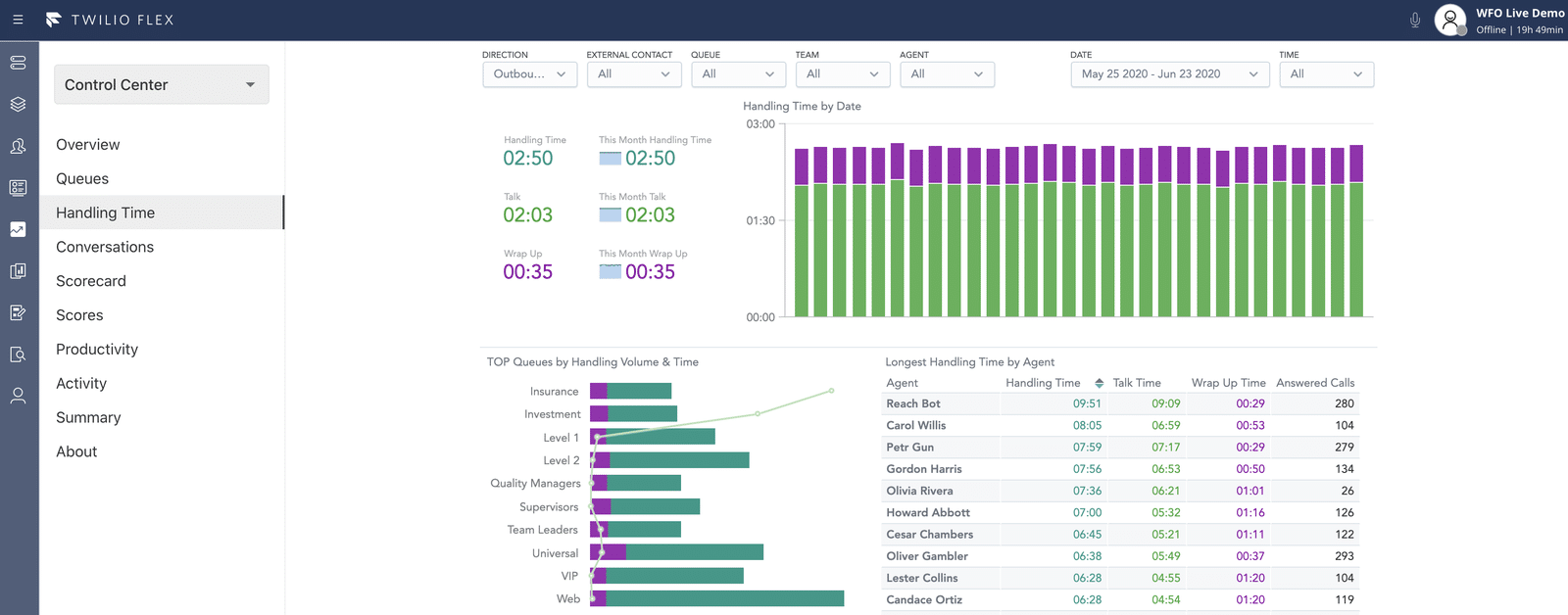
How can you use Agent Assessments in Flex Insights?
Agent Assessment Reporting is a specific feature within Flex Insights that focuses on the quality and feedback of the conversations. It allows you to create and use questionnaires to evaluate different aspects of a conversation, such as customer satisfaction, call quality, and agent reflection. It also provides you with data views, dashboards, reports, and alerts that are based on the results of the assessments. In other words, Assessment Reporting in Flex Insights is a subset of Flex Insights that helps you assess the quality of the conversations, while Flex Insights as a whole helps you monitor and analyze the conversations.
Use-Cases for Assessment Reporting
Now that you’ve learned about Agent Assessments, how can a Contact Center best utilize this feature? Here are a couple examples in which you could use Assessment Reporting:
1) Quality Assurance / Agent Evaluation:
One example of a good use of Assessment Reporting is for call quality assurance. A contact center manager wants to assess how well their agents are handling customer interactions. They create a comprehensive questionnaire that focuses on various aspects of agent performance. The questionnaire evaluates the agent’s ability to communicate clearly, address customer inquiries effectively, and provide accurate information. It assesses whether agents show empathy towards customers, actively listen to their concerns, and demonstrate a commitment to resolving issues promptly. It assesses whether agents adhered to company policies and procedures during customer interactions. They assign this questionnaire to all their call center managers to be completed by them after each call ends. They use Assessment Reporting in Flex Insights to view the agent quality assurance scores and reports for each call, agent, and channel. They also create a report that shows the averages and the distribution of ratings. They use this report to coach their agents and figure out ways to improve the call center.
2) Agent Reflection:
Another example is assessing the agent’s reflection of their conversations. A contact center manager could create a questionnaire that asks the agents to reflect on their performance, their emotions, and their learning outcomes of each conversation. They also ask them to set goals for their future conversations and provide any feedback or suggestions for themselves or their peers. They assign this questionnaire to all their conversations and enable it to be completed by the agents after each conversation ends. They use Assessment Reporting in Flex Insights to view the agent reflection scores and feedback for each conversation, agent, and channel. They also create an alert that notifies them when an agent has a low reflection score or a negative feedback. They use this alert to provide coaching and support for their agents and foster a culture of continuous learning and improvement.
Why is Assessment Reporting Helpful?
Assessment Reporting is a useful feature that helps you to analyze your conversations in more depth. It provides you with qualitative and contextual data points that complement the quantitative metrics. For example, you can understand why a customer was dissatisfied with the service, whether it was due to the agent’s behavior, the call quality, or the outcome itself. These factors are not easily captured by a simple rating scale. By having an internal resource review and score the conversations, you can identify the areas of improvement and optimize your contact center performance. Assessment Reporting enables you to apply an analytical approach to your customer service, rather than relying solely on scores.
Example Walkthrough
Let’s create a questionnaire that rates each agent on 3 questions and then show how a Supervisor can evaluate a conversation:
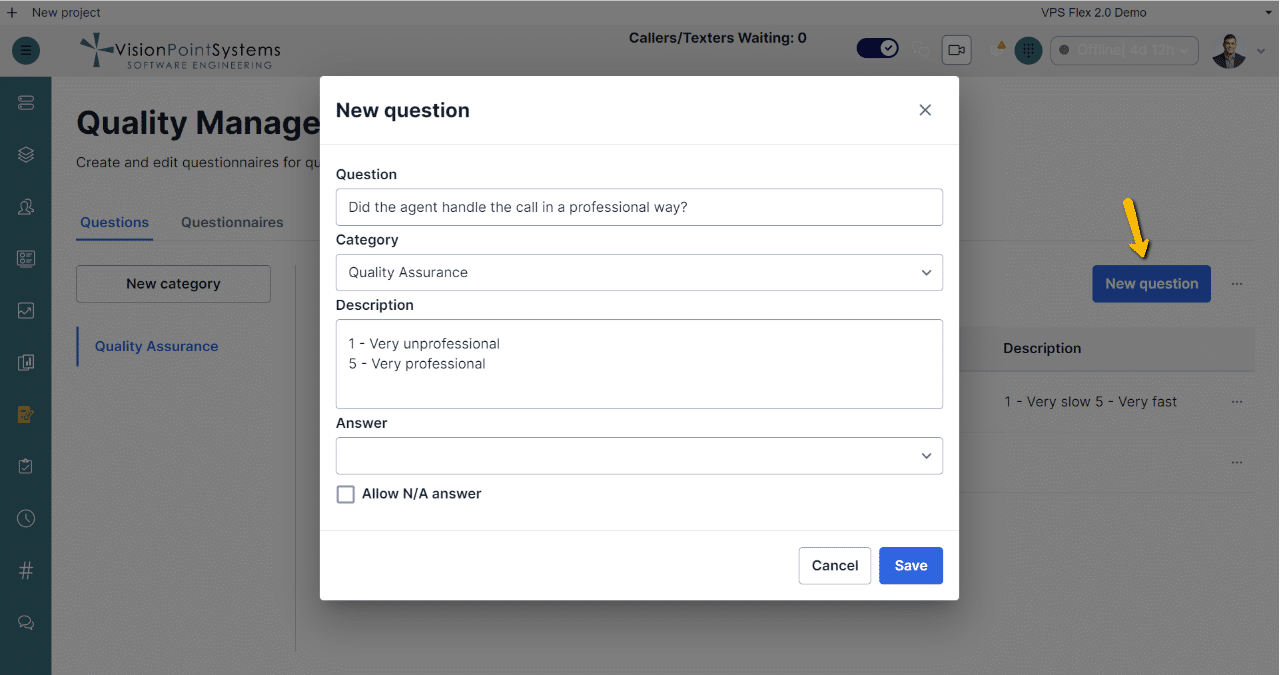
Prior to creating a questionnaire, a Supervisor will first need to create a category of questions and the questions to be added to the questionnaire. Let’s use the quality assurance example suggested to help put together some questions that a Supervisor can use to determine whether a conversation is up to standard.
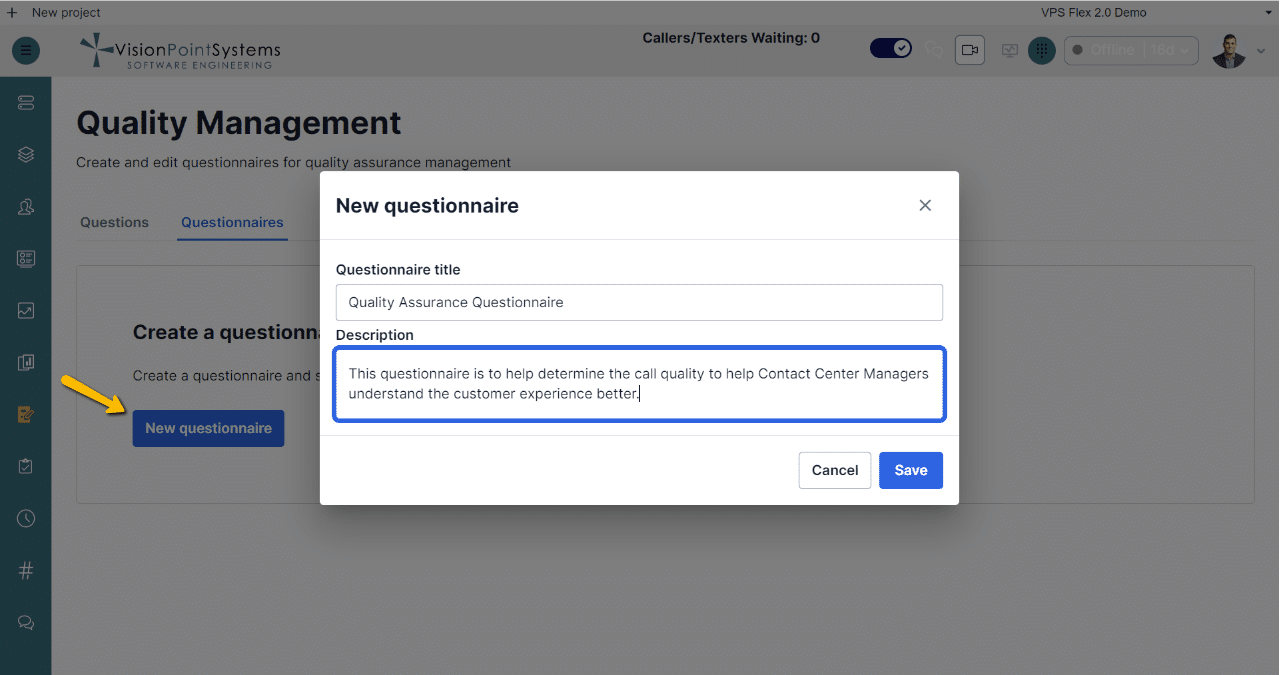
After creating the questions, a Supervisor can then create the questionnaire and add the created questions to the questionnaire. If these questions were relevant to a separate questionnaire, they could be added to that questionnaire as well. This limits the need to duplicate questions.
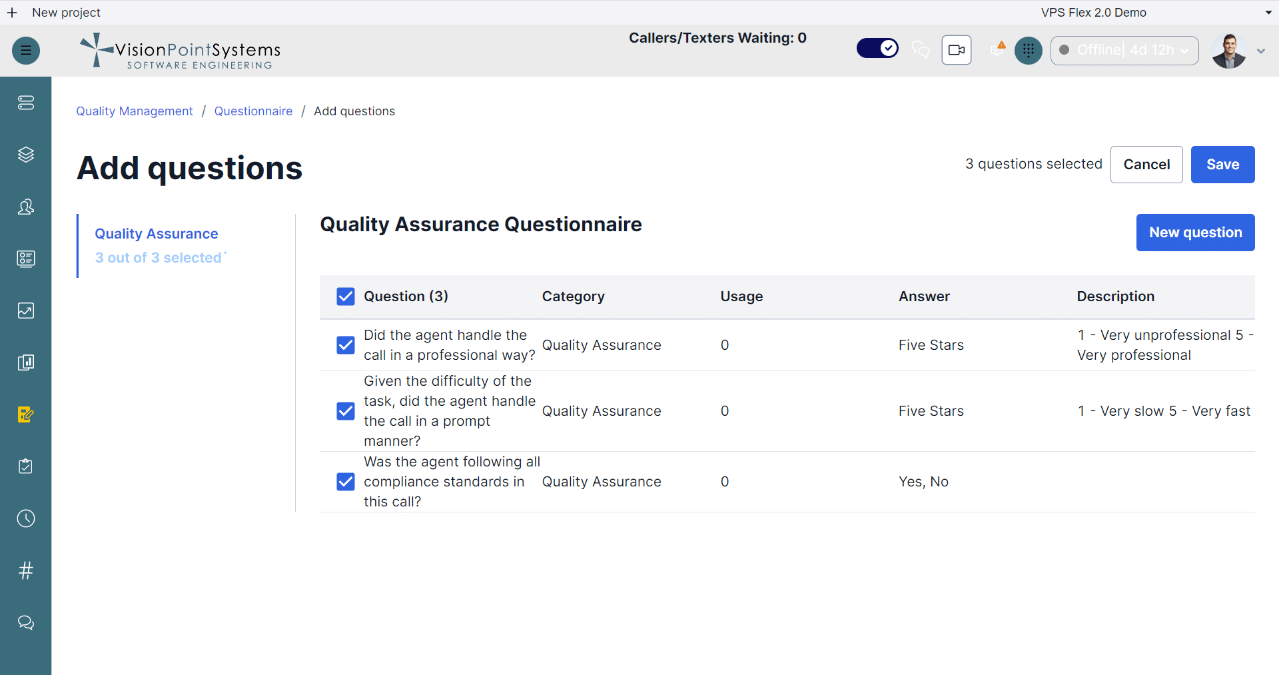
Add the list of selected questions then press ‘Save’.
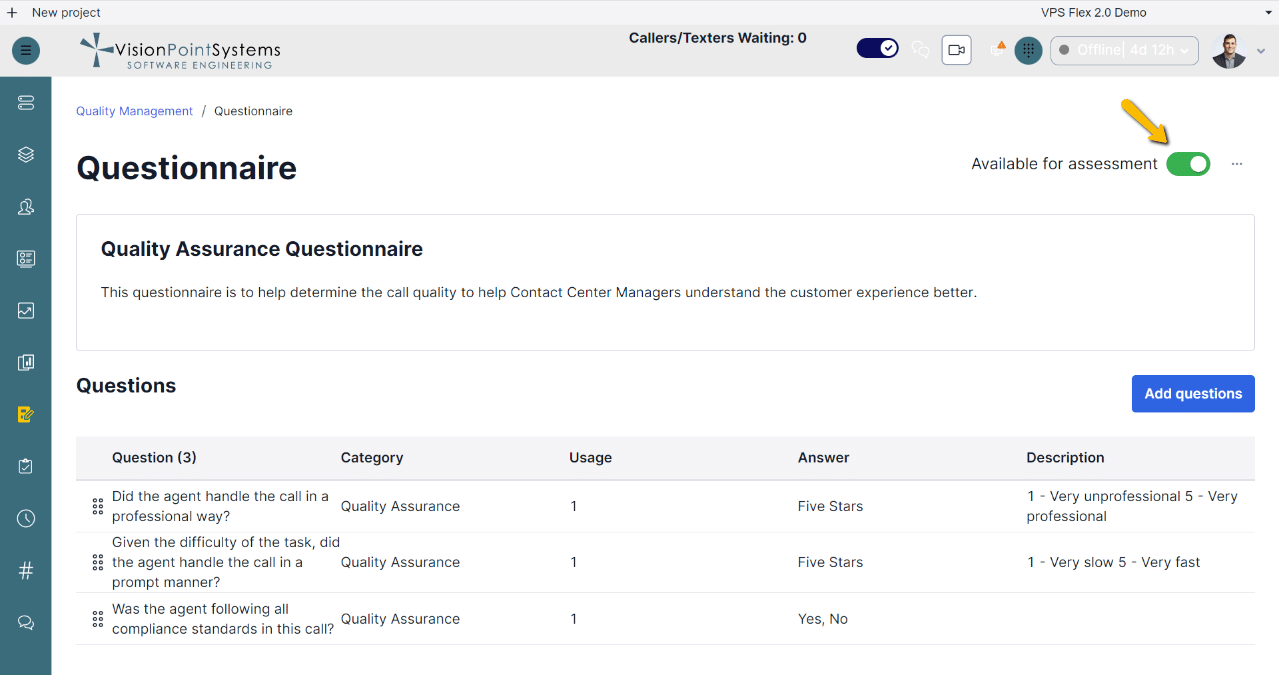
Be sure that your questionnaire is ‘Available for assessment’ by toggling the questionnaire on.
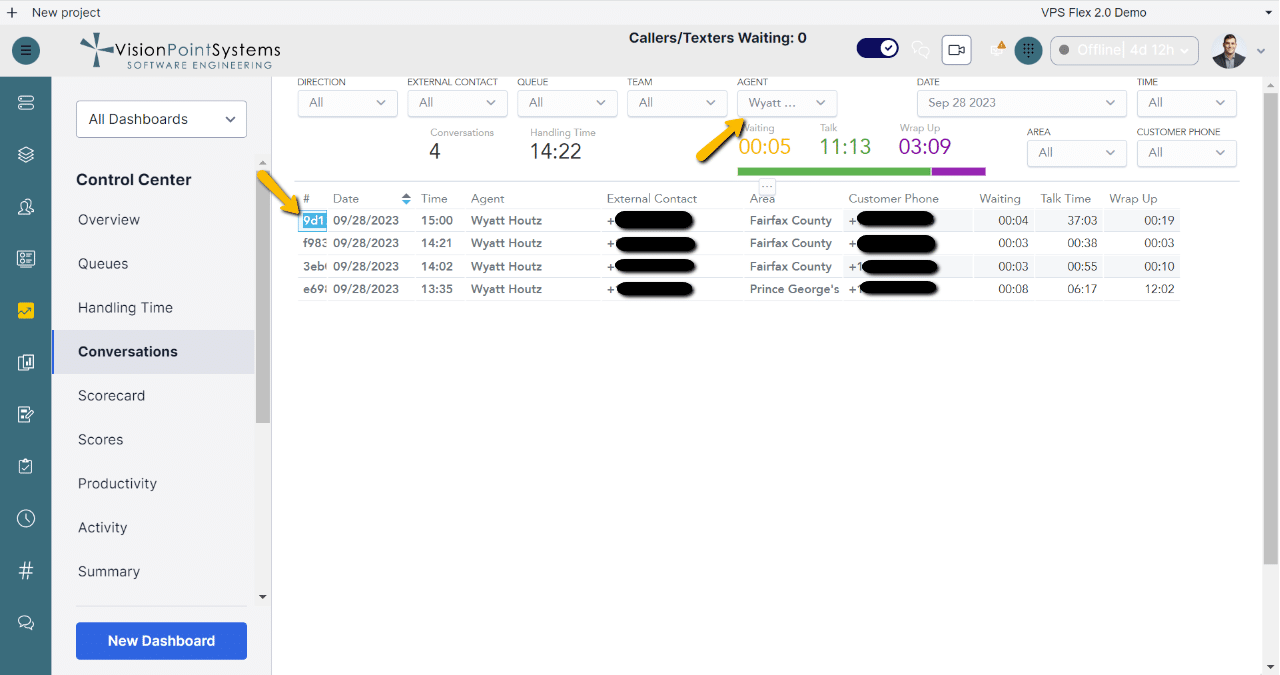
Supervisors have the ability to narrow down their search to a particular agent’s conversation by utilizing the filters located at the top. To delve deeper into a specific conversation, simply select the Conversation ID.
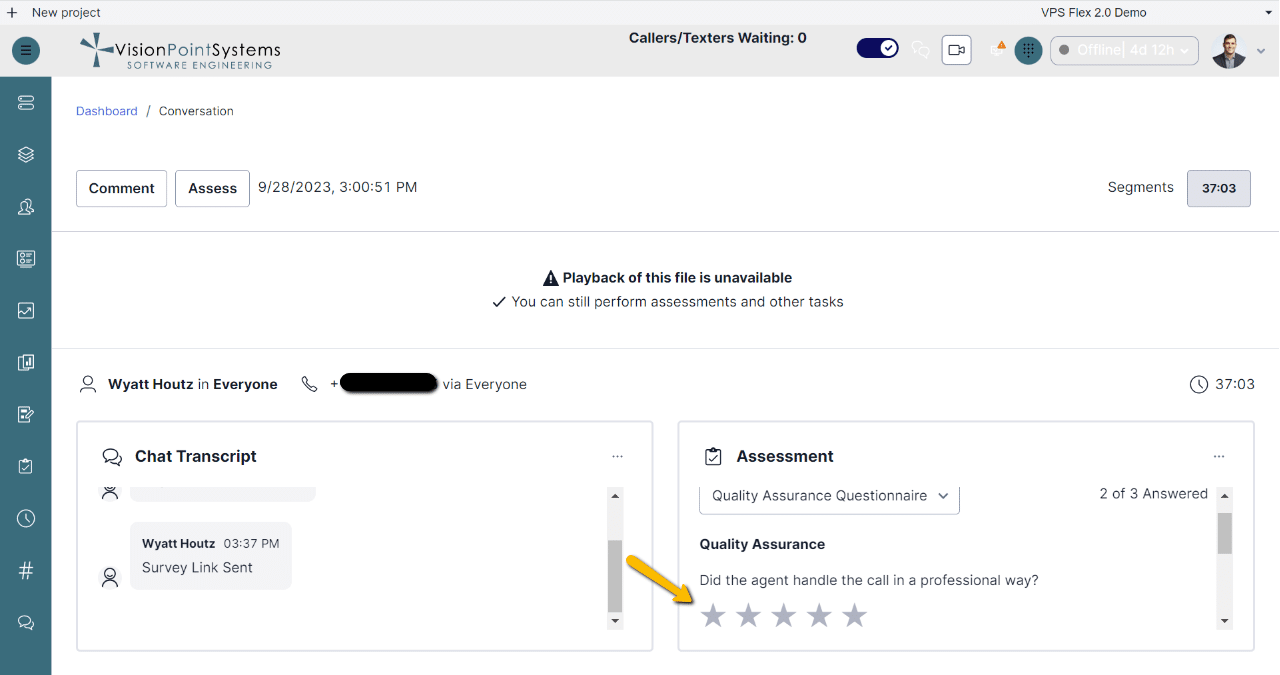
After drilling into a conversation, a Supervisor has the option to assess and rate it using the created questionnaire. It’s important to note that the questionnaire needs to be active, as indicated by the toggle switch.

After data has been gathered, reports on the data provide visualizations that help inform changes for the contact center and coaching tips for agents.
Conclusion
In conclusion, Twilio Flex Assessment Reporting is a valuable tool for optimizing your contact center operations. By harnessing the power of data and insights, you can provide exceptional customer service and continually enhance your team’s performance. To kickstart your journey with Assessment Reporting in Twilio Flex and ensure a seamless setup, talk to our Twilio services team today. Vision Point Systems has been a professional services partner with over a decade of experience and are experts in helping you make the most out of Flex Insights.
